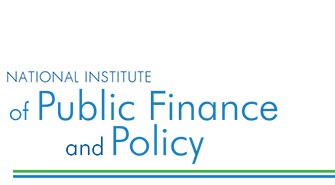GST in India: Chasing A Mirage or Reality?
SACCHIDANANDA MUKHERJEE, Professor, National Institute of Public Finance and Policy, New Delhi, India. email:sacchidananda.mukherjee@nipfp.org.in
|
A major indirect tax reform since Independence
India is moving towards introducing a Goods and Services Tax (GST). The GST would be a multistage comprehensive value added tax (VAT) encompassing both goods and services. Given the federal structure of India and the fact that taxation powers have been constitutionally assigned to different governments, the introduction of a GST will be a major indirect tax reform since Independence. Both the federal and state governments will have concurrent taxation rights at every stage of production and distribution.
Towards removal of structural rigidities, cascading of taxes and expansion of government revenue:
India’s present sales tax system can be best described as an origin-based tax system where the manufacturing state collects Central Sales Tax (CST) on goods being sold interstate. CST remains a stranded cost for interstate importers. In the present indirect tax system, tax cascading is arising due to definitional differences between goods and services and that of production (manufacturing) and distribution (trade) and differences in taxation power between Centre and State Governments. There is no harmonisation in tax rules, rates and regulations across states, resulting in substantial transaction costs for businesses. It is expected that the introduction of a GST will remove these structural rigidities and provide continuity of input tax credit chains.
A GST would be an improvement as it would reduce cascading of taxes — that is, tax being applied on top of other taxes at every stage of the production process — and transaction costs associated with interstate sales of goods. Removal of taxes on inter-state transactions is expected to enhance efficiencies in production and distribution and hence, encourage more investment. Reduction of cascading of taxes and transaction costs could enhance the capacity of manufacturers and service providers to absorb volatility in input prices. Rising competition could also result in reduction in the final price of commodities, which in turn could result in an expansion in demand. As a result, a GST would enhance economic growth by attracting investment and releasing working capital.
The Indian government expects that the introduction of a GST will improve India’s ranking in the World Bank’s ease of doing business index.
One major fiscal motive behind the introduction of a GST could be to expand government revenue, given rising demands for public expenditure and fiscal constraints put under the FRBM Act, 2003. Amending the Constitution to remove definitional differences between goods and services, as well as, those between manufacturing and distribution of goods, will grant concurrent taxation powers to the federal government and the states, on the consumption of goods and services. Joint monitoring of the same taxpayers should also result in better tax compliance, minimise revenue leakage and improve tax coordination between federal and state tax administrators.
Challenges in the introduction of GST:
There are several challenges if a GST is introduced, which can be classified under two broad headings: design and structural issues, and administration and institutional issues. On the design, the decision to exclude major fossil fuels (petrol/ gasoline, diesel, ATF, natural gas and crude petroleum) and electricity from the GST will mean that there will still be substantial cascading of taxes. This will jeopardise the scope for improving the competitiveness of domestic industries in the international market.
On administration, if the GST is administered separately by the federal and state tax administrators, taxpayers who previously faced a single tax administration (for example retailers or service providers) will instead face two tax |
administrations. Complying with different tax authorities for a single transaction could enhance compliance costs, which could work against voluntary compliance. One possible option could be to establish joint tax administration for many functions.
The scope to expand the tax base through a GST is limited as most economic activities are already taxed by the federal and/or state governments. There is not much scope for further expanding of the tax base by bringing more goods and services under the purview of GST, unless the number of goods and services under the exemption list are reduced. But no consensus on exemptions has been reached among the concerned governments yet. Possibilities of expansion tax base lies with the expansion of tax net.
Targeting the informal sector:
Given India’s large informal sector that escapes taxable transactions, the opportunity cost of being under the tax system cannot always outweigh the benefits. The presence of informal credit and labour markets, as well as a large domestic demand for locally produced goods and services, often leads to unaccounted-for incomes that avoid taxation. Since the new tax regime is expected to work through more integrated and redefined supply chains, for the regime to be beneficial and successful, it is important that more and more enterprises find it useful to be a part of the GST regime.
By excluding goods that are important to maintain government revenue — like petroleum products and electricity — from the GST system, significant cascading of taxes of the present indirect tax system will be retained hampering the export competitiveness of domestic industries. Cascading of taxes generates revenue for government, although it goes against the interests of business. Removal of tax cascading has key revenue implications for government and it will affect different governments differently depending on the importance of taxes subsumed under the proposed GST to their revenue.
Conclusion:
A more harmonised taxation system, like a GST, restricts the freedom of individual governments to deviate from a common tax structure. Given the federal structure of India, harmonisation of tax rules and regulations is more important than harmonisation of tax rates from a business perspective.
If international experience is anything to go by, it is unlikely that a faultless GST will be designed and rolled out in India as a single event. But some structural faults could easily be addressed and rectified. Given the diversity involved in design and administration, an Indian GST will be unique. How successful it is in terms of compliance and revenue mobilisation will largely depend on the provision of incentives for tax invoice based transactions and the simplification of tax administration. [For a detailed analysis read related working paper]
References
Mukherjee, S. (2015). Present State of Goods and Services Tax (GST) Reform in India, National Institute of Public Finance & Policy, Working paper No. 154 |




